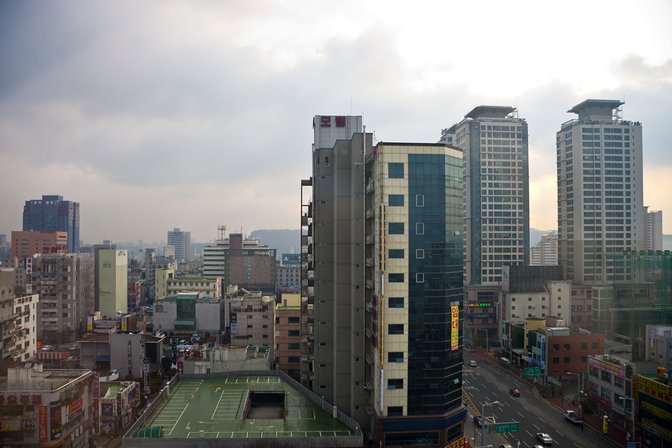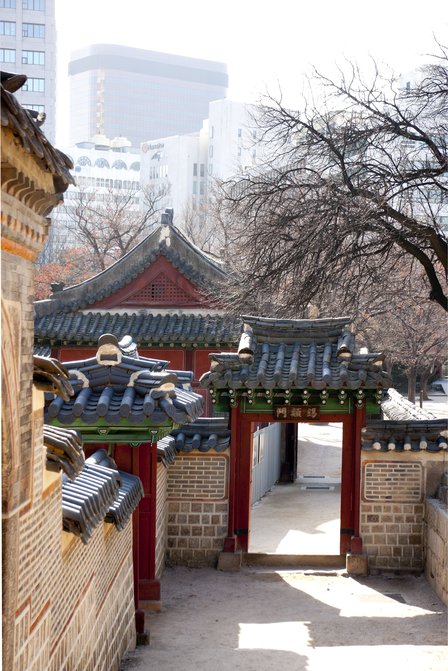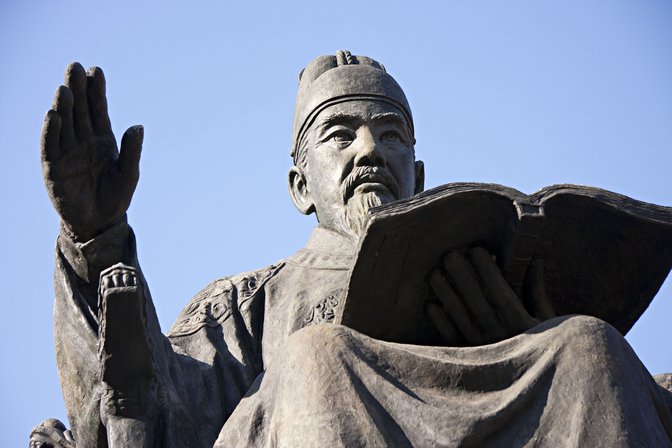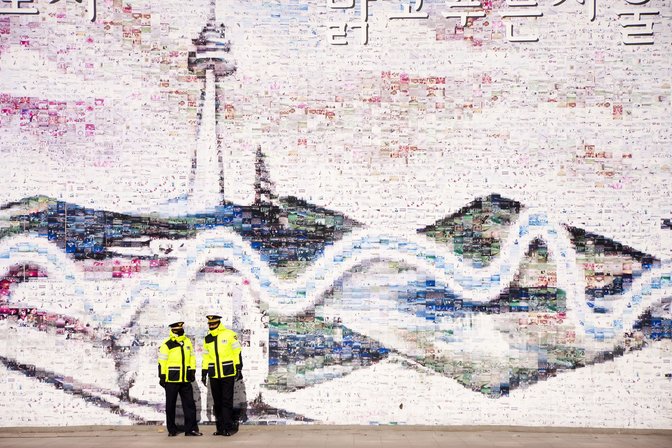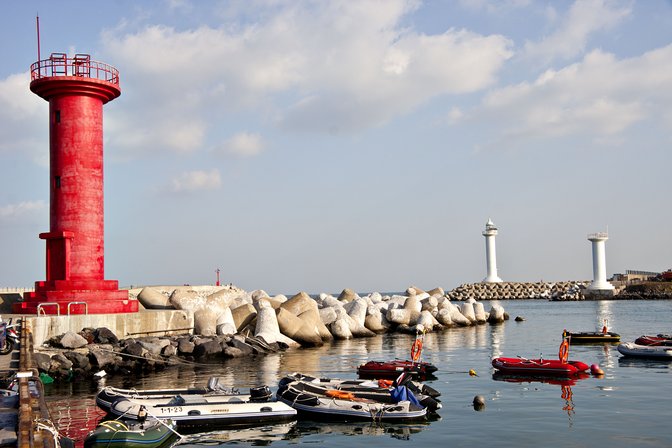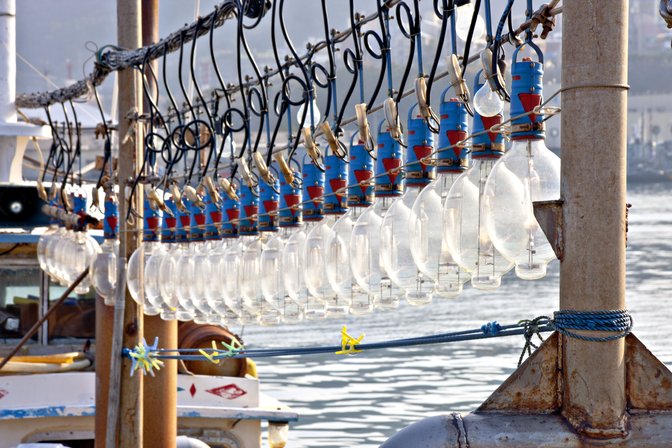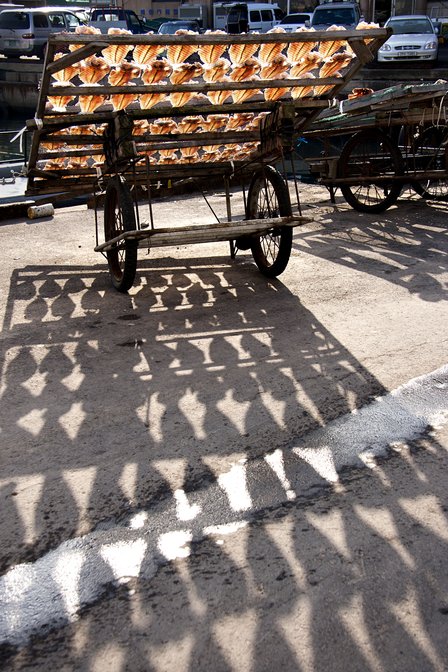Photos from Korea
Rather than just linking to the gallery of photos from my recent trip to Korea, I thought I'd try describing the context for a few of them here.
My trip started in Daejeon, a city that grew out of the confluence of two train lines in the early 20th century. Daejeon is also the home of KAIST, where I gave a departmental colloquium. Unfortunately the weather didn't cooperate so I didn't get to see much of the city except for the view from my hotel. Something about the juxtaposition of large and small scale buildings, and the utilitarian shapes of the buildings, gave the cityscape an appearance that I found intriguingly cluttered.
To get from Daejeon to Jeju, where ISAAC was being held, I needed to take the Daejeon subway to the train station, the train from Daejeon to Seoul, the Seoul subway to Gimpo airport, and then a plane to Jeju (it seems that almost all flights from Gimpo now go to Jeju, since the rest of Korea can now be reached quickly by train and most of the international traffic to Seoul goes through the other airport, Incheon). But between my arrival in Seoul and my flight, there was time for a couple of hours of sightseeing, which included a visit to Deoksugung, one of the former royal palaces. What struck me here was the contrast between the serenity of the palace site and the surrounding big city.
The palace grounds also feature a large statue of Sejong, possibly the greatest of the Korean kings, who was responsible for the creation of the highly-logical Korean alphabet. I saw several other statues of heroic historic Koreans in other parts of the city but didn't get the story behind them; on one of my later flights, I read about a statue of a famous admiral, now being removed for restoration, that is quite controversial because of some of the historical detail about his armor and pose that it gets wrong.
Seoul Plaza, near the palace, was in the process of being turned into an ice skating rink for the winter. Apparently after the Korean Olympic success in figure skating, skating has become much more popular. A nearby building was being renovated and the temporary wall around it was decorated with a large graphic design made of postcards.
I found some time while in Jeju to get away from the conference and visit the marketplace (mostly dominated by stalls full of dried fish), which I found quite picturesque, but the light did not cooperate for photography. On the day after the conference, before my flight home, it was sunny and I took another walk out to the harbor area of the town. The harbor is a working fishing area, not really set up to look pretty for the tourists, but there are some nice towers marking its entrance.
The fishing boats are all set up with long chains of electric lights, which I guess attract the fish to the surface at night.
This is also where they dry some of the fish, although not on a large enough scale to supply all of the stalls at the market.
Notable for its omission: my usual complement of graffiti photos. From what I could tell, Korea does not have graffiti. Google disagrees, but at least, I didn't see any.
